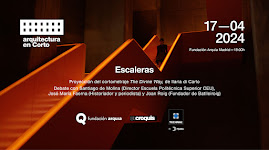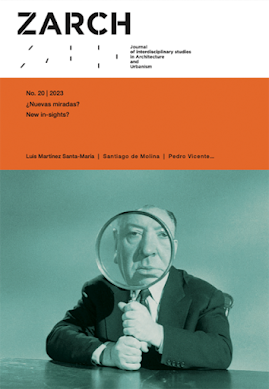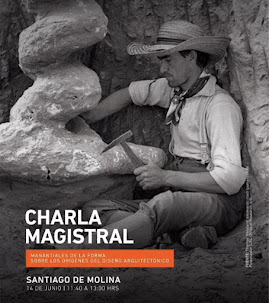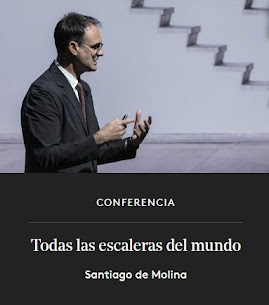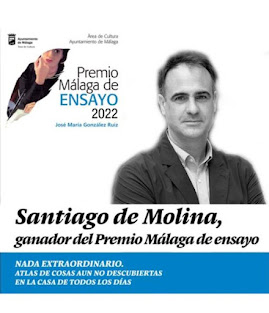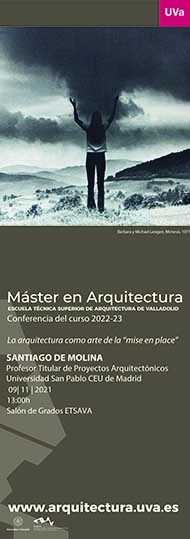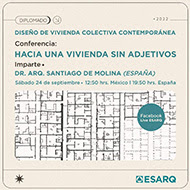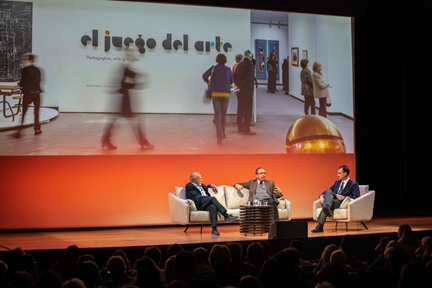Para el arquitecto la hipermetropía solo es un problema en su vida diaria de enhebrar agujas y leer sesudos tratados de construcción, pero no afecta a su disciplina, que por esencia no funciona en ese orden de magnitud de lo extremadamente cercano. En una edificación las cosas no llegan a rozarse con la punta de la nariz de los milímetros.
El detalle de la arquitectura, frente al del miniaturista, el neurocirujano y el relojero, funciona a una distancia que roza tanto la bastedad como la vastedad. Hace falta ser muy fino para que el detalle de una obra sea algo depurado y elegante, efectivamente, pero el grosor del grano de esos encuentros no entrará nunca en conflicto con cualquier posible hipermetropía porque se encuentra en un territorio donde el cuerpo se separa de la obra lo suficiente como para no resultar traumático. Este hecho hace que, frente a otras disciplinas, la arquitectura resulte un juego mucho más amplio (en términos de distancia, que no de profundidad vital) que el de la miopía que ofrece el beso del ser amado o sus olores y caricias. La arquitectura apela a la totalidad de la experiencia corporal pero se revuelve frente al puro ver de tan cerca.
Si el hipermétrope no puede dibujar sin gafas, al menos sí puede construir y disfrutar de la arquitectura en su plenitud. Tanto es así que la mirada hipermétrope puede llegar a ser una excelente metáfora del modo de ver de esta disciplina. Porque en arquitectura no se trata de ver más cosas de cerca, sino de verlas a esa precisa distancia del cuerpo que comienza en el metro de distancia de los ojos, a la que llega un brazo. Exagerando algo las virtudes de esta disfunción, finalmente, la hipermetropía nos evita la tentación de concentrar la atención en los detalles como objetos de adoración o de habilidad, a cambio de ofrecer una mirada más atenta al conjunto, y capaz de jugar con la sorpresa de una contemplación propia. Tras ese detenerse en esquinas, encuentros y relatos aparte del discurso general de la obra, el detalle de arquitectura logrado debiera permitir, consecuentemente, ver de cerca sin la necesidad de ver bien de cerca. Ahora que lo pienso, como hacen las gafas progresivas.
For the architect, farsightedness is only a nuisance in daily life—threading needles and reading dense construction manuals—but it doesn’t really affect the discipline itself, which by its very nature doesn’t operate at the scale of the extremely close. In a building, things never quite brush up against the nose-tip realm of the millimetric.
Architectural detail, unlike that of the miniaturist, the neurosurgeon, or the watchmaker, operates at a distance that borders on both the brash and the broad. It certainly takes refinement for the detail of a work to feel polished and elegant, but the thickness of the grain in those junctions will never conflict with any degree of farsightedness. It belongs to a realm where the body stands far enough from the work to avoid trauma. This makes architecture, compared to other disciplines, a much broader game (in terms of distance, though not necessarily of existential depth) than the nearsighted intimacy of a lover’s kiss, their scent or touch. Architecture appeals to the entirety of the body’s experience, yet recoils from the act of seeing up close for its own sake.
If the farsighted architect can’t draw without glasses, they can still build and enjoy architecture in its fullness. So much so that the farsighted gaze may well be an excellent metaphor for how this discipline sees. Because architecture is not about seeing more things up close, but about seeing them from that precise bodily distance—beginning at one meter from the eye, where the arm can reach. If we stretch the virtues of this visual dysfunction just a little, farsightedness ultimately spares us the temptation to obsess over details as fetishes of skill or devotion, in exchange for a gaze more attuned to the whole, capable of entertaining the surprise of its own contemplation. After all that pausing at corners, junctions, and stories aside from the main discourse of a building, the successful architectural detail should, in the end, allow us to see up close without needing to see well up close. Come to think of it, just like progressive lenses do.


















